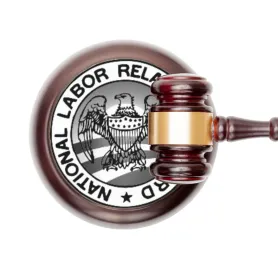This morning the National Labor Relations Board (the “Board”) unveiled the final rule setting forth the new legal test it will apply in analyzing whether affiliated businesses are “joint employers”. The final rule, which will be effective on April 27, 2020, can be found here.
Background
On September 13, 2018 the Board published its proposed rule for modifying the existing joint employer standard. An extensive notice and comment period followed, which yielded approximately 29,000 comments before the January 28, 2019 deadline. Now, over a year after the comment period closed, the final rule is ready.
Under the existing standard, the Board would find an affiliated company to be a joint employer of another employer’s employees merely because the affiliated company possessed the authority to control those employees’ terms and conditions of employment, such as hiring, firing, discipline, supervision, and direction. In other words, an entity could be found to be a joint employer even if that entity did not actually exercise such control or authority over the employees in question.
The New Joint Employer Rule
Under the Board’s new final rule, in order to be found a joint employer an affiliated company must possess and exercise substantial direct and immediate control over one or more essential terms and conditions of employment that meaningfully affects another employer’s employees. While the possession of indirect control or contractually reserved control over workers (i.e., retaining the right to exercise control over workers at a later date) can be a factor in determining joint employer status, evidence showing that a company actually exercised its authority or control is now required in order for the new standard to be met.
The final rule clarifies that “essential terms and conditions of employment” are specifically limited to the rights related to determining wages, benefits, and hours of work as well as those dealing with the hiring, discharge, discipline, supervision, and direction of employees. Equally important is the Board’s definition of “direct and immediate control” that is “substantial.” Essentially, in future joint employer cases, the Board will assess whether the company actually possessed and exercised control on a regular or continuous basis. Evidence of control that is merely sporadic or isolated will be insufficient to justify finding an affiliated company to be a joint employer.
In his announcement of the final rule, NLRB Chairman John Ring stated, “With the completion of today’s rule, employers will now have certainty in structuring their business relationships, employees will have a better understanding of their employment circumstances, and unions will have clarity regarding with whom they have a collective-bargaining relationship.” The final rule’s enhanced clarity may allow companies to reevaluate their current arrangements with their business partners, particularly those that rely on franchisees and subcontracting work.
Looking Forward
Although the final rule provides employers, unions, and employees with much needed clarity as to whether certain business relationships will rise to the level of being a joint employer relationship, some questions still remain. How will the rule be interpreted and applied in future cases? Will the rule be subjected to legal challenges?



 />i
/>i


